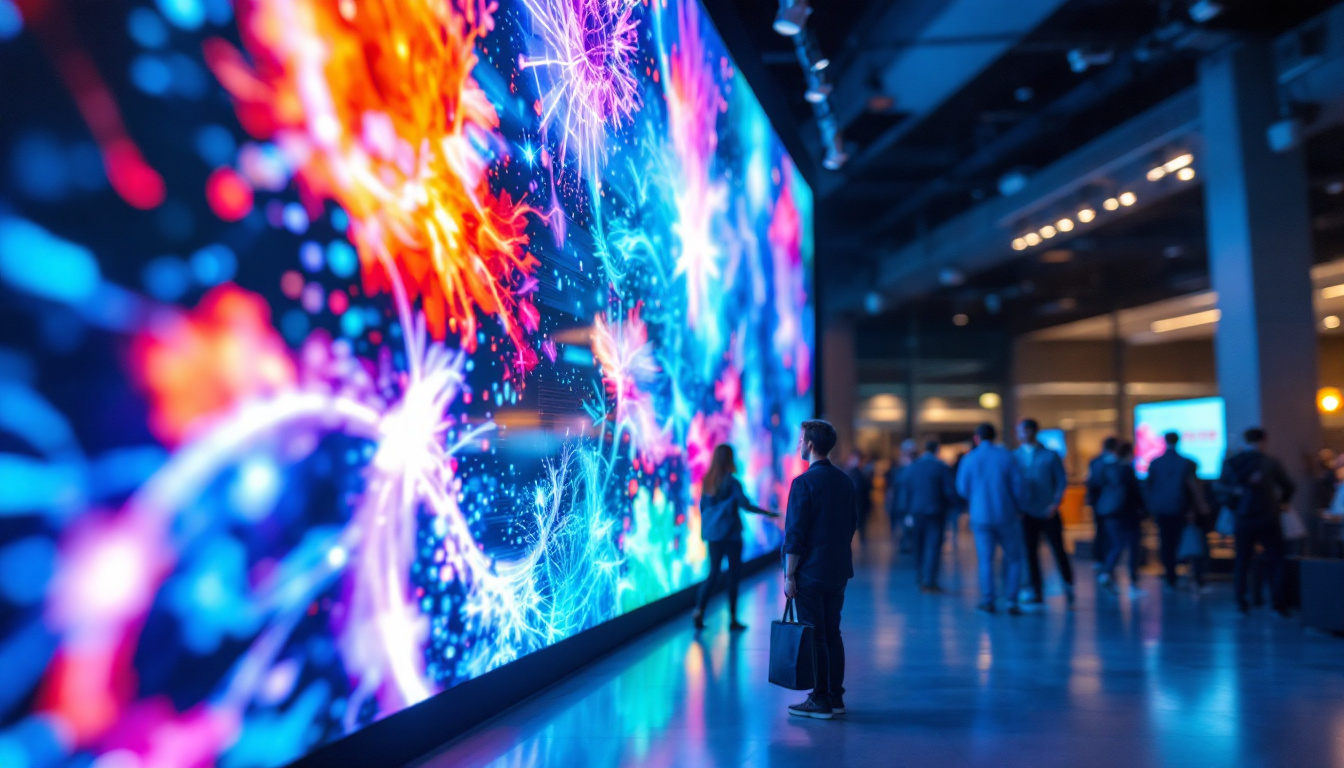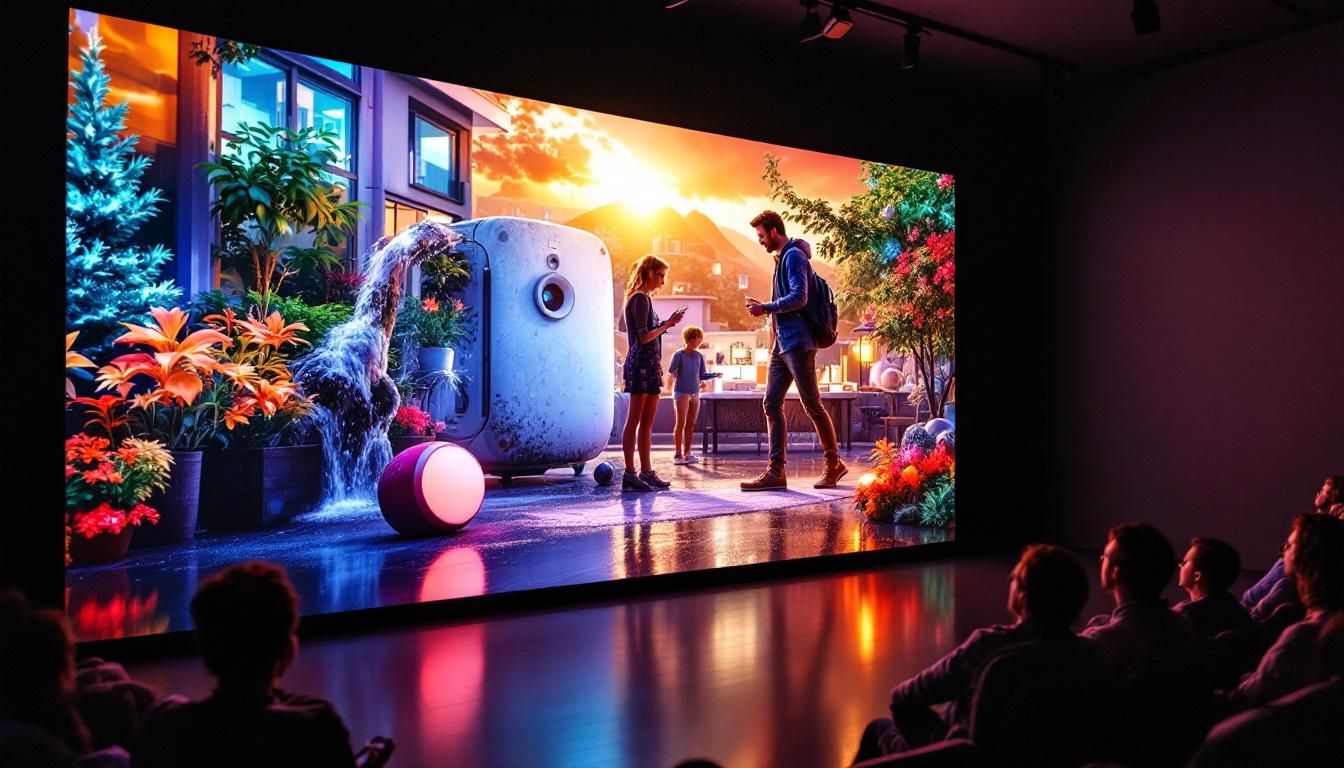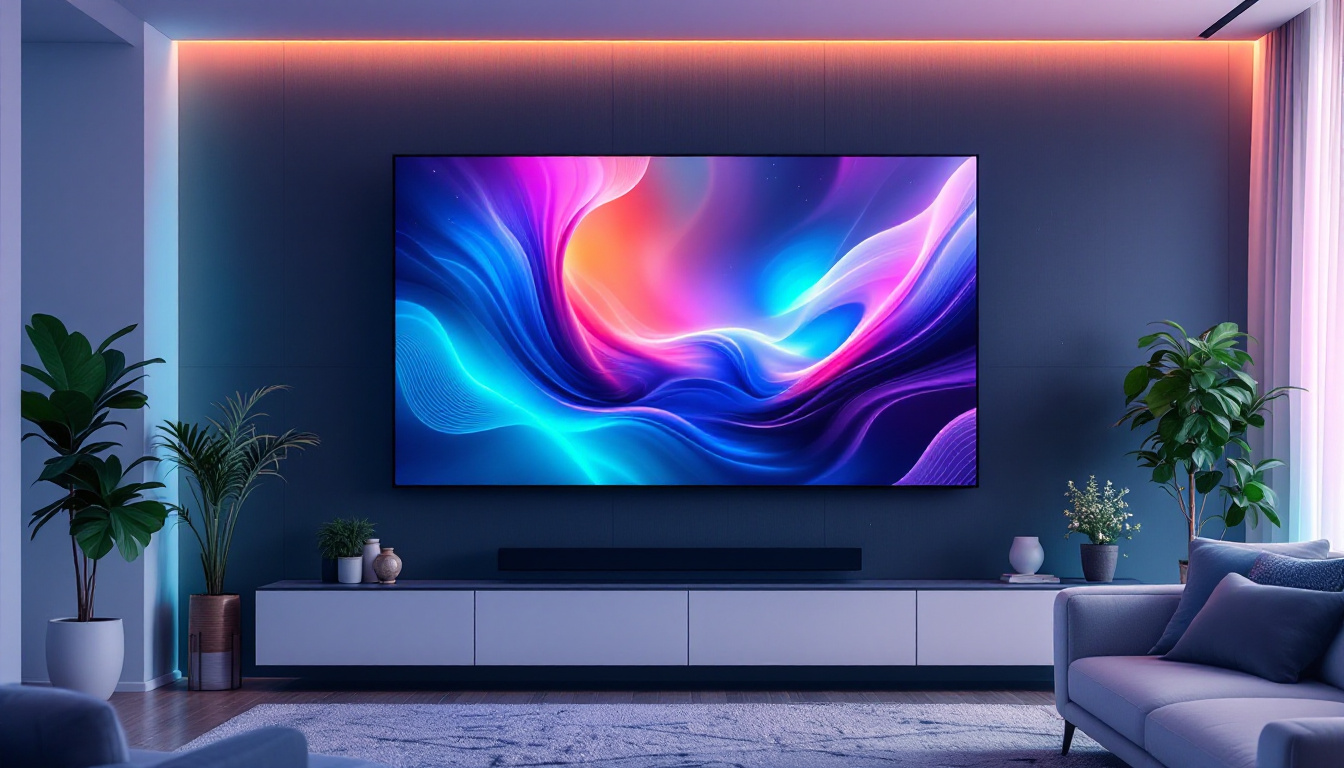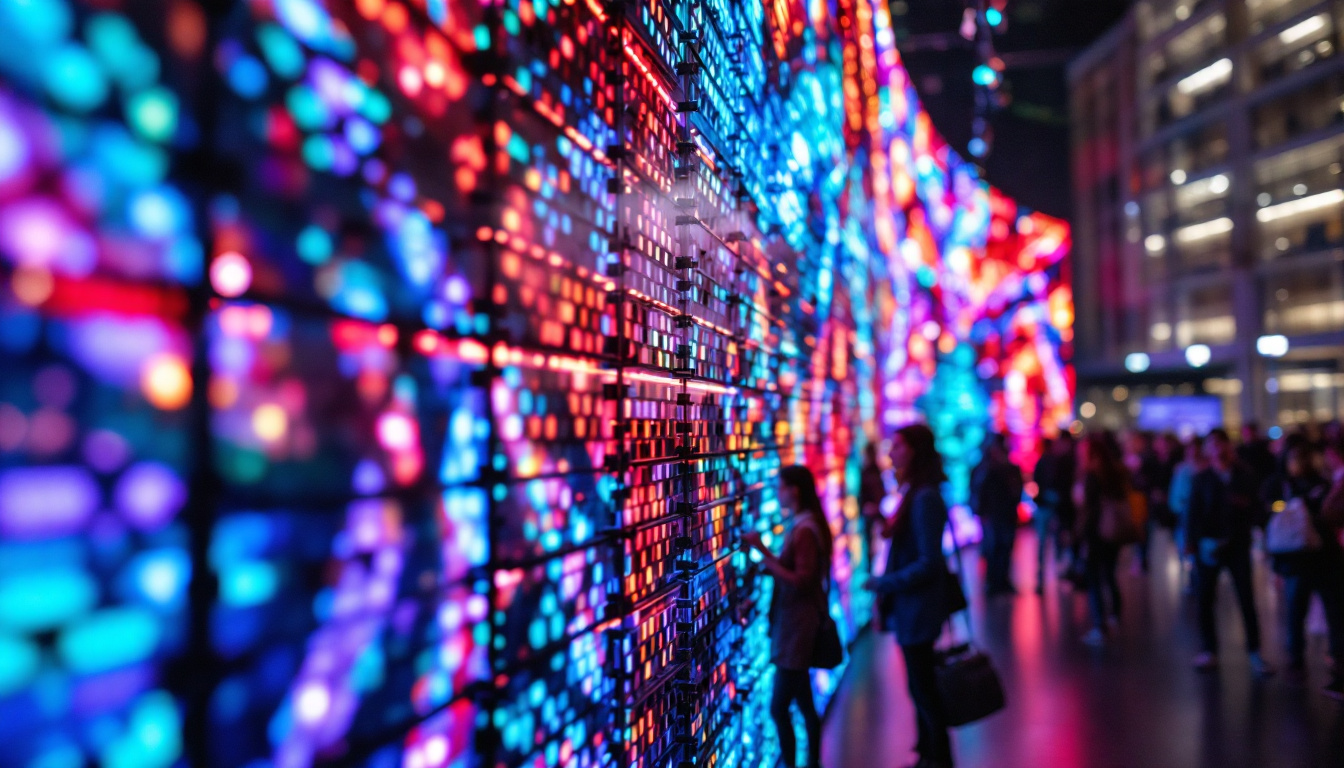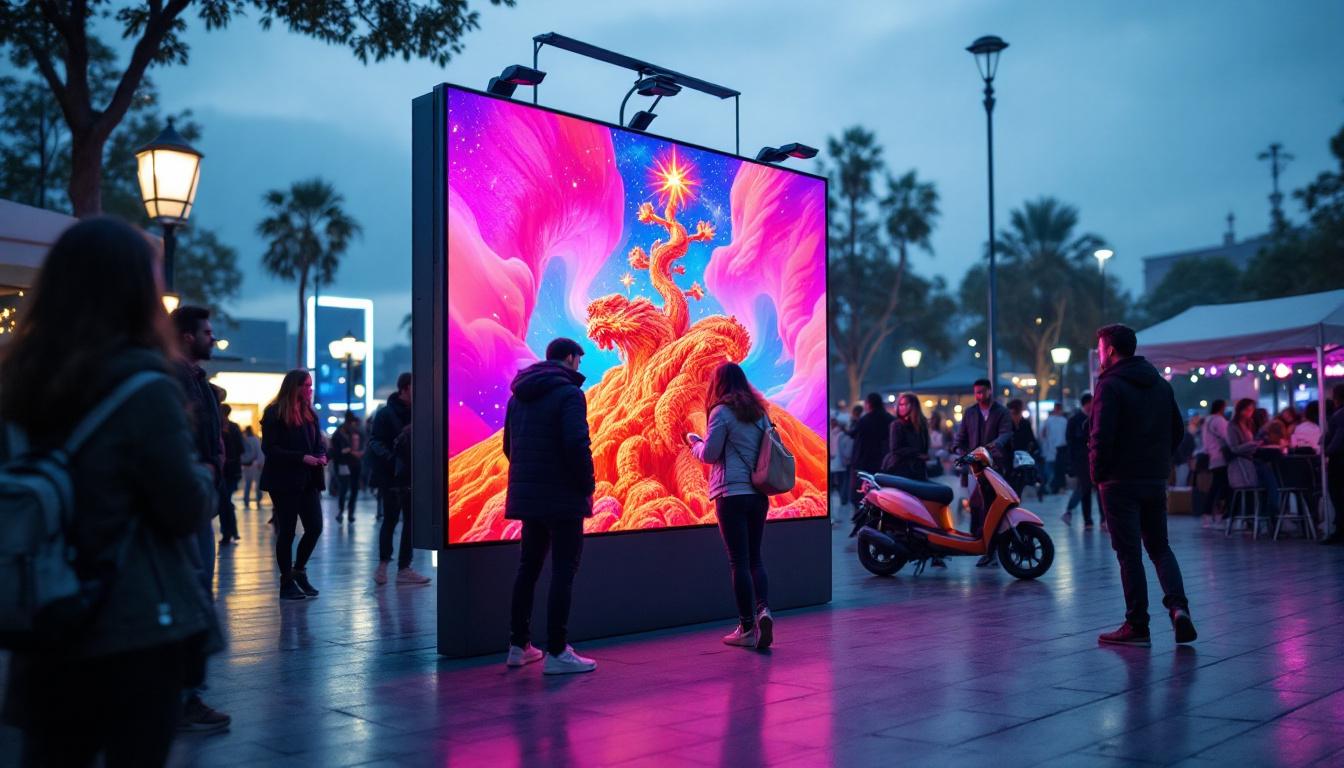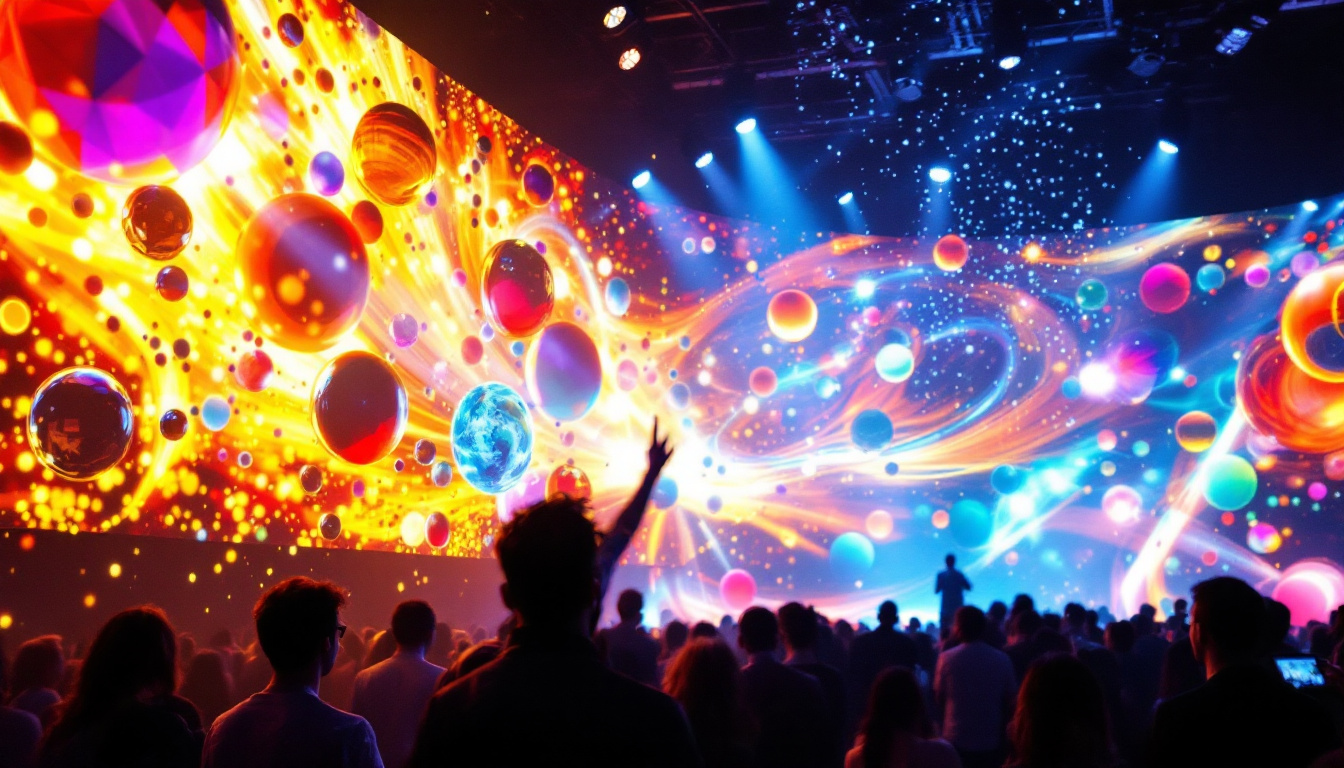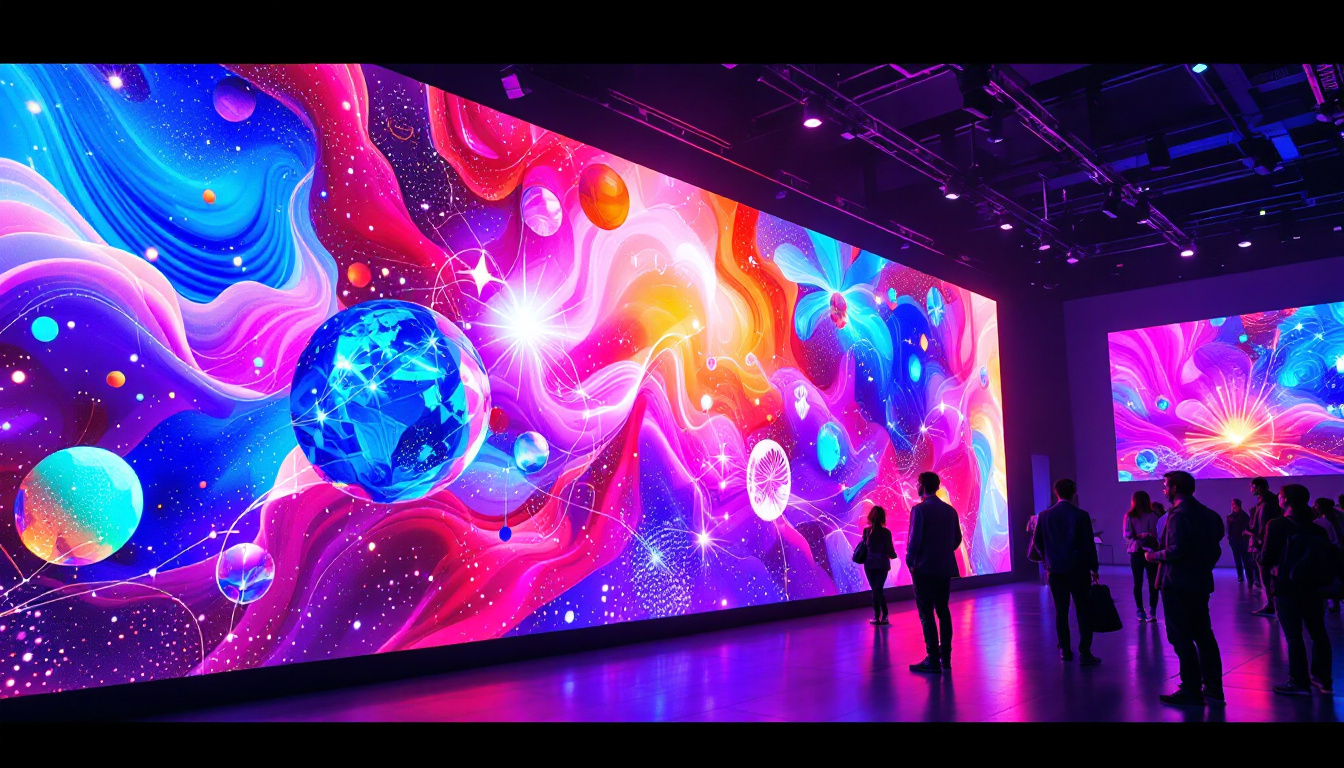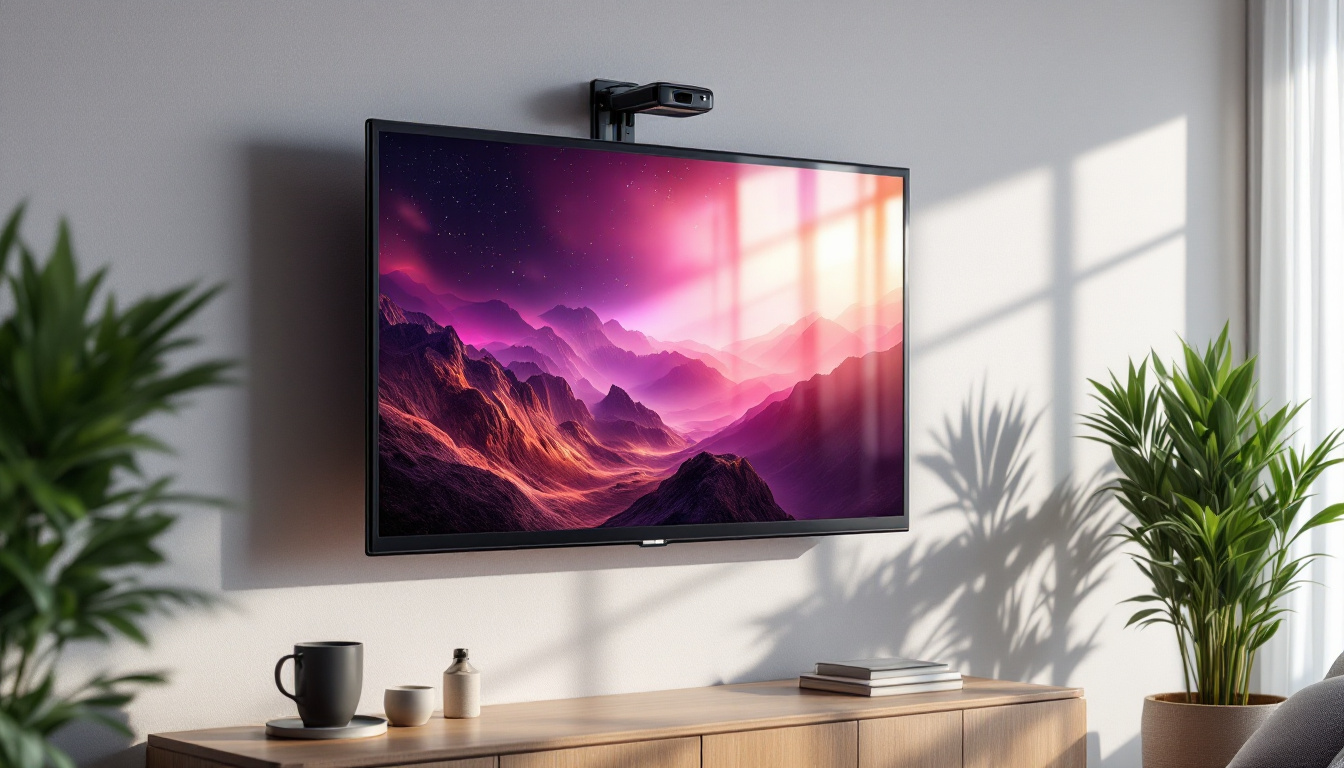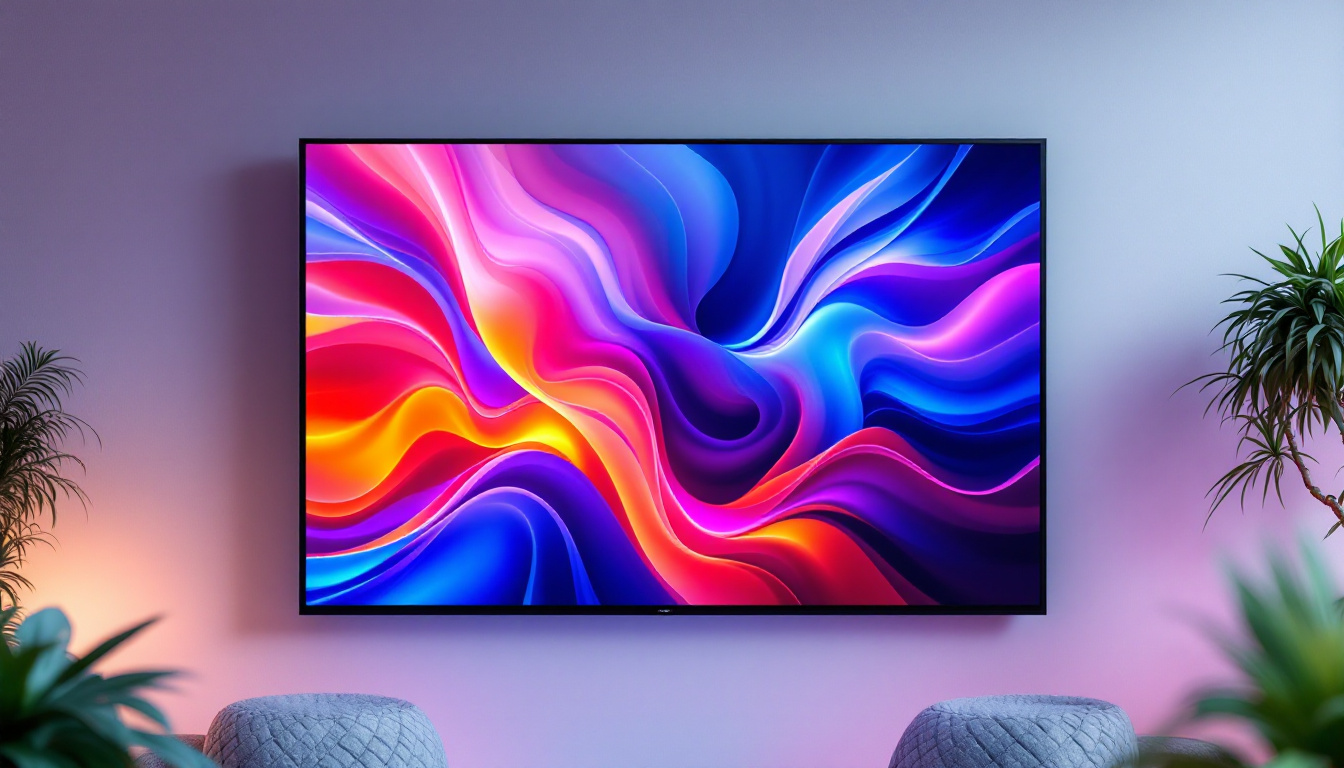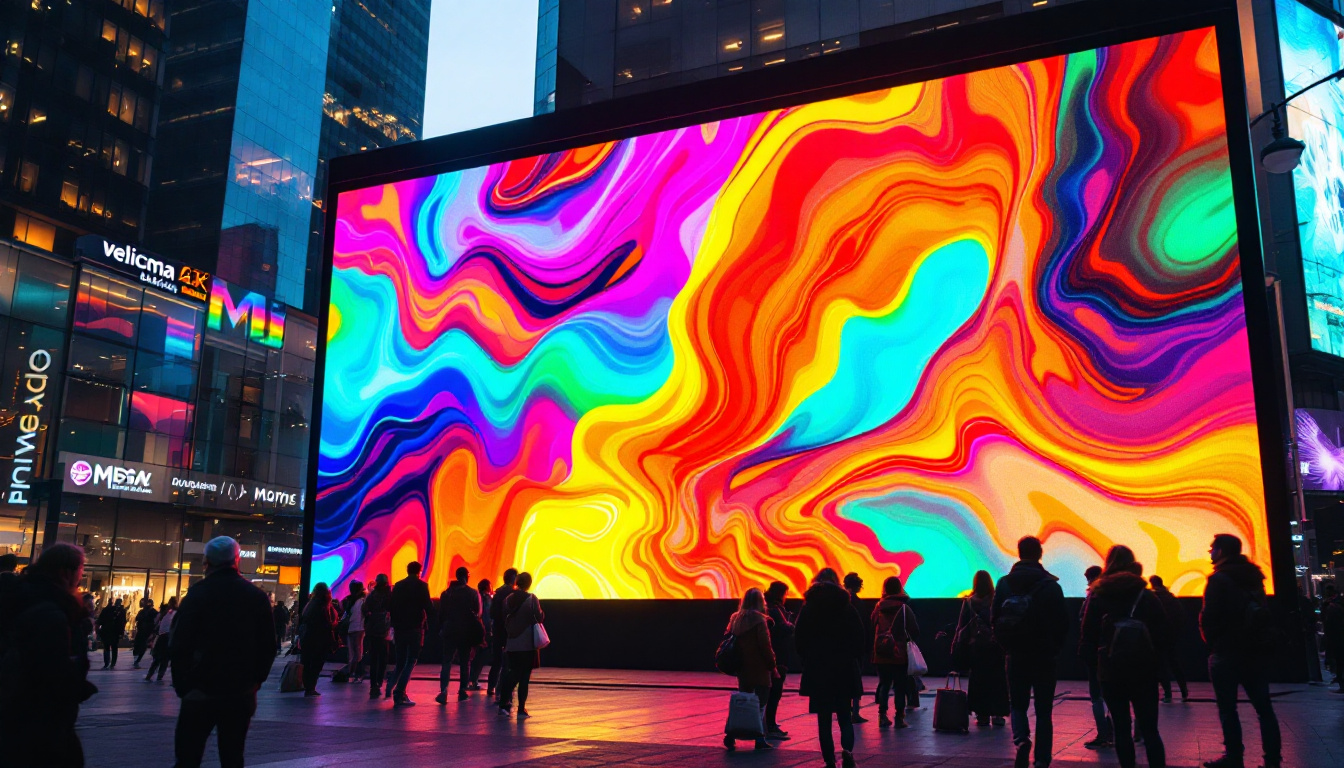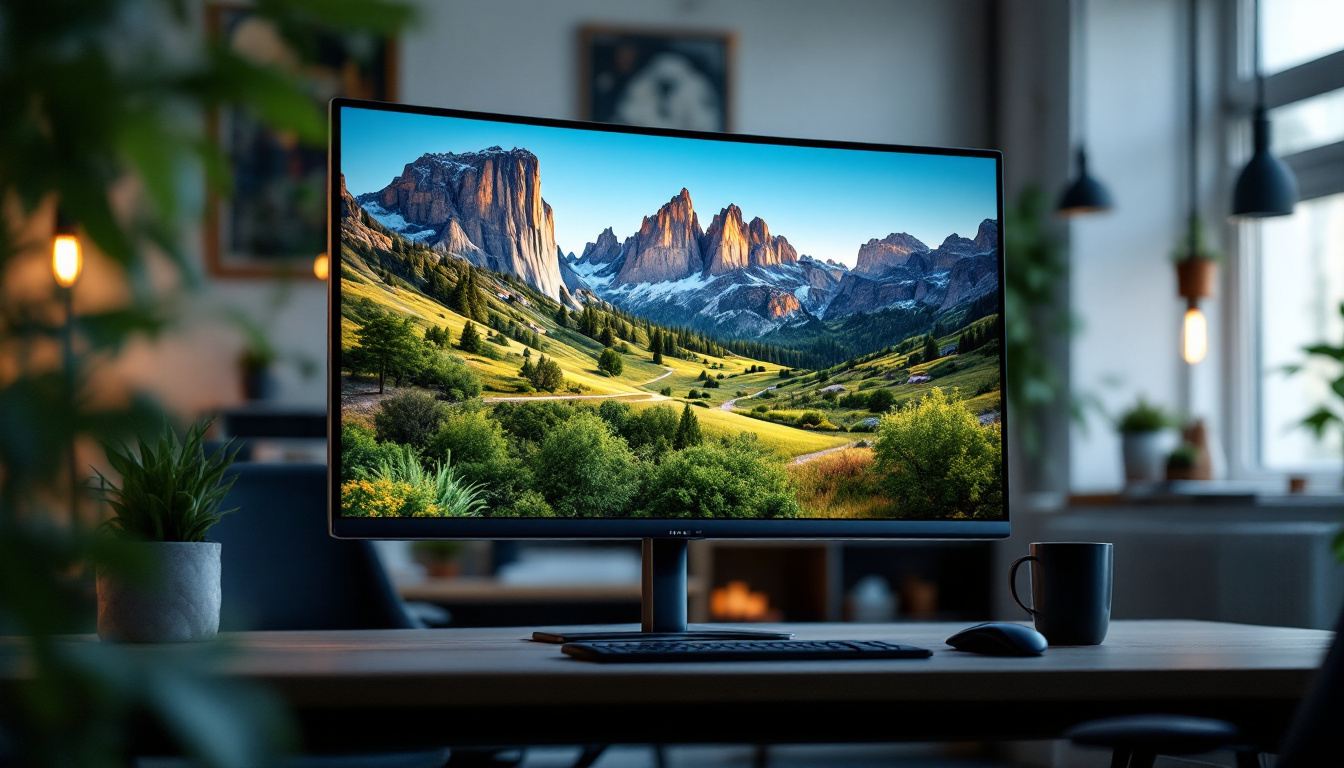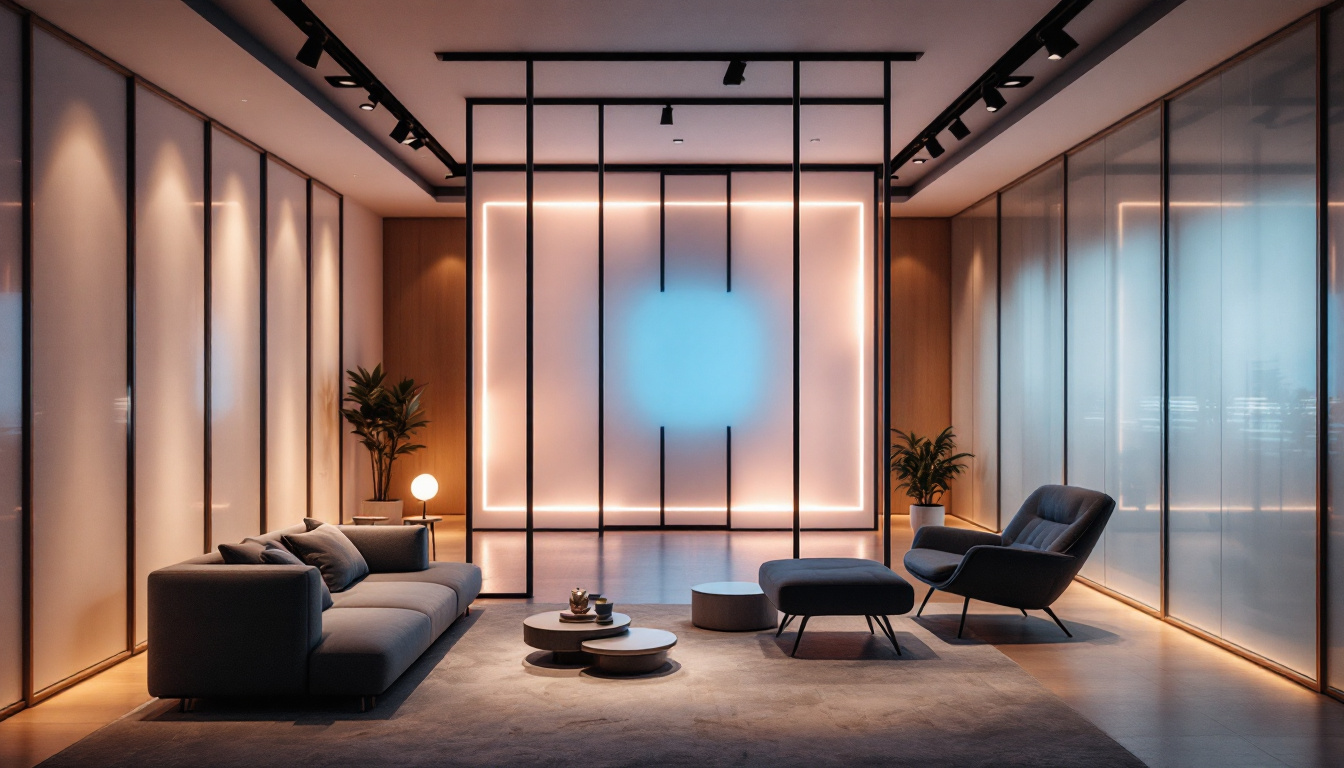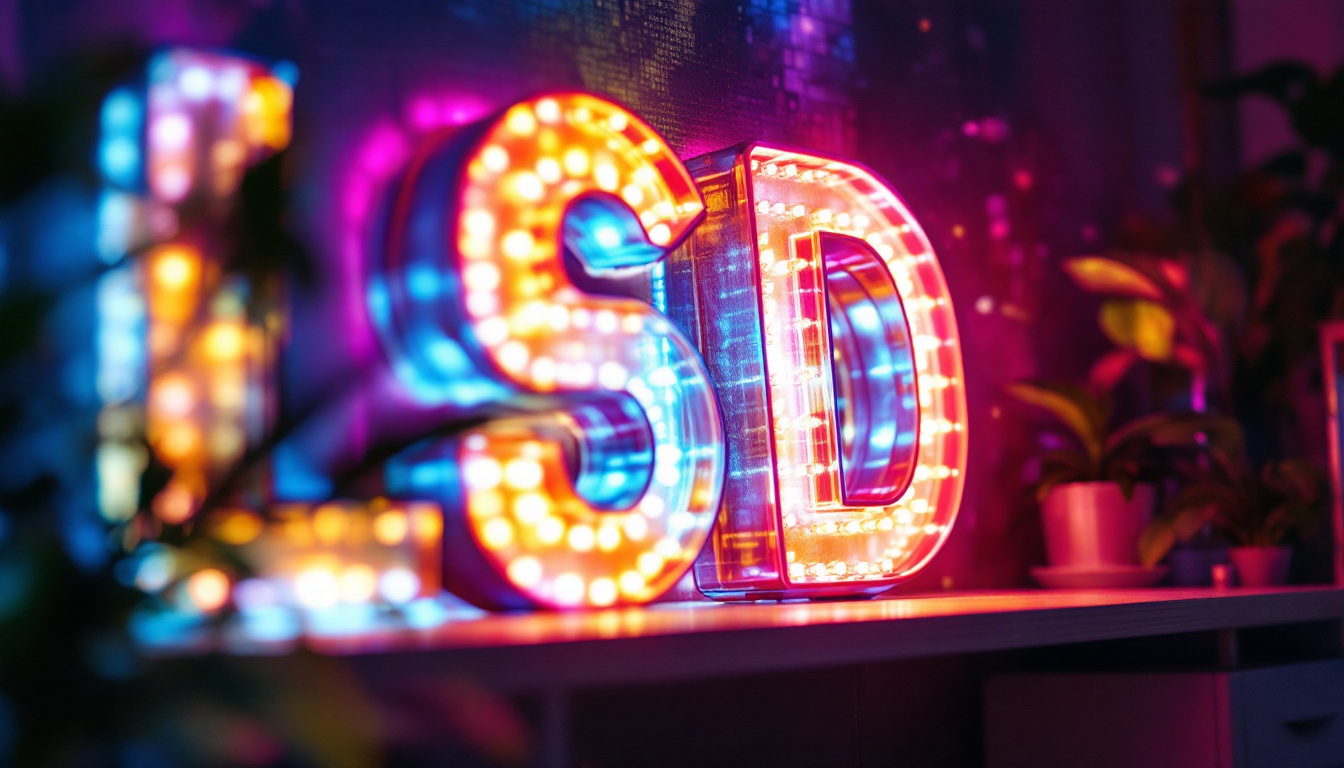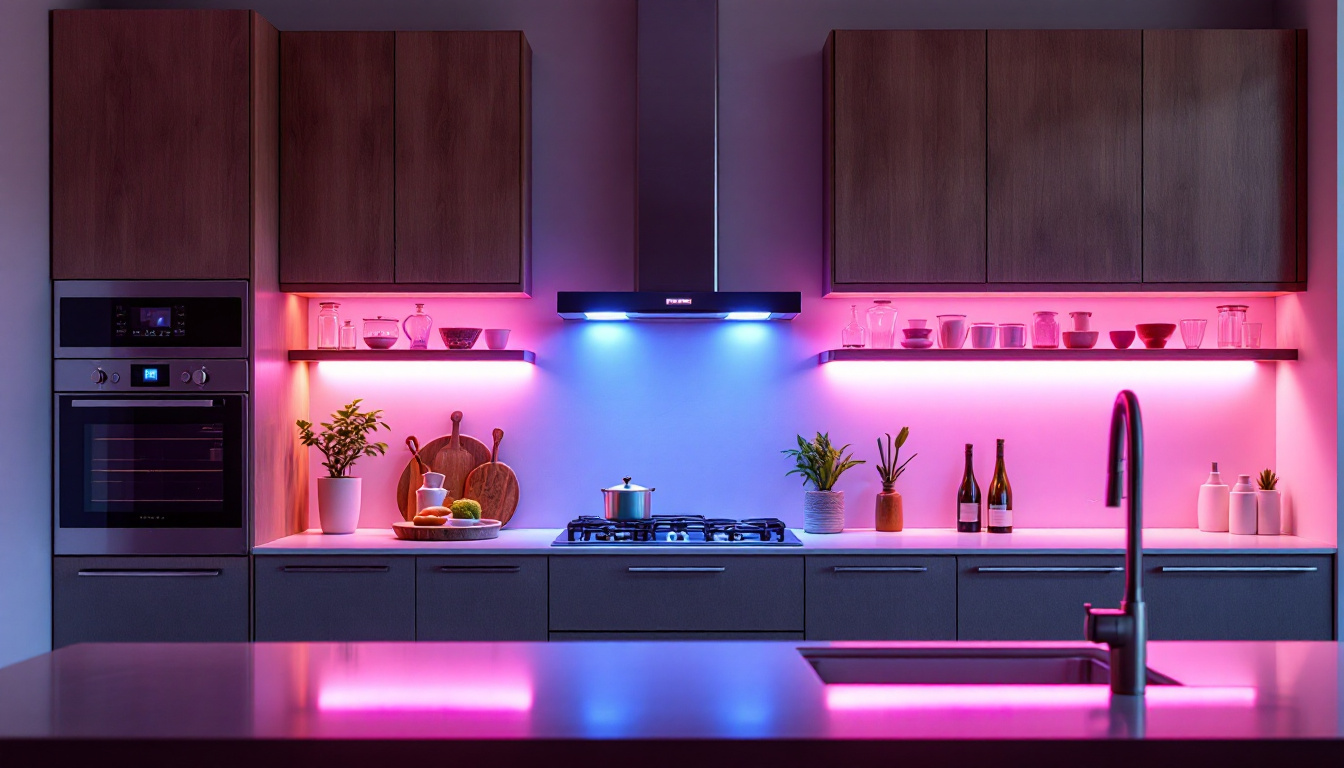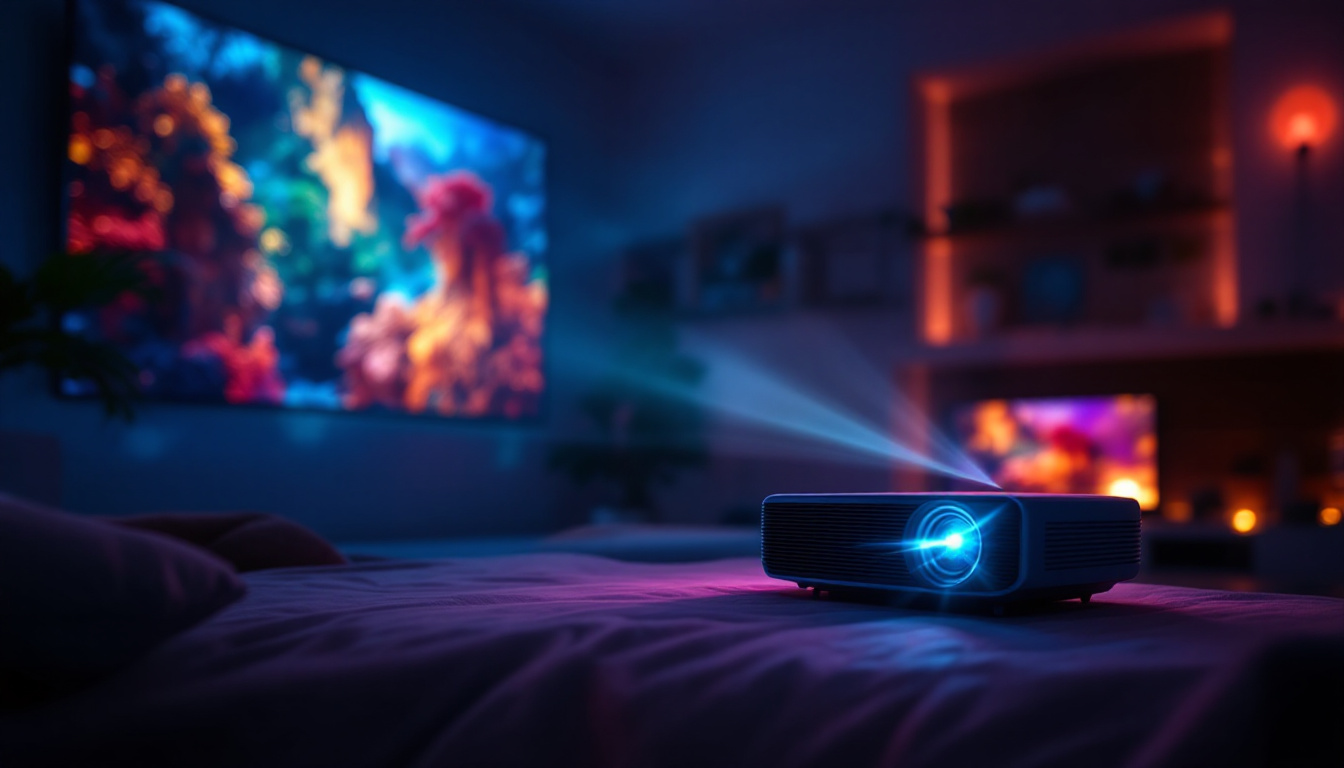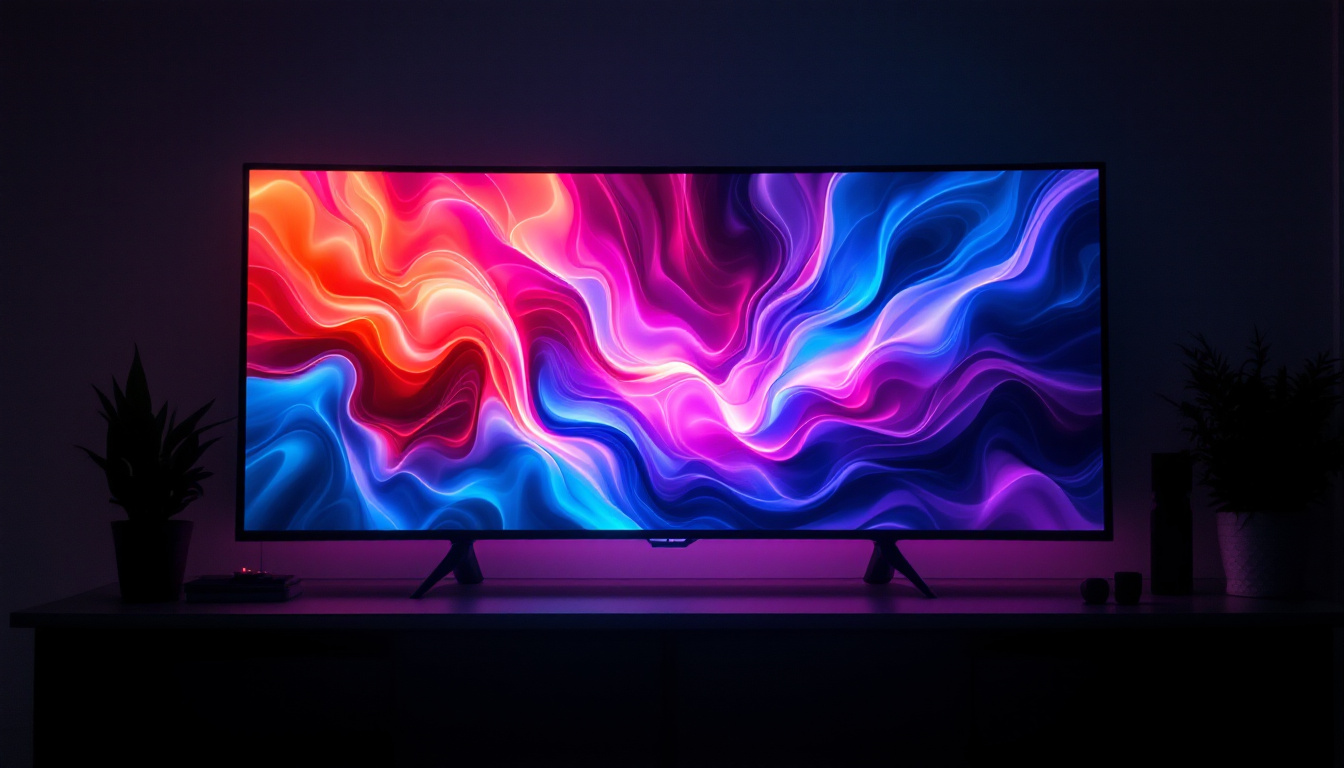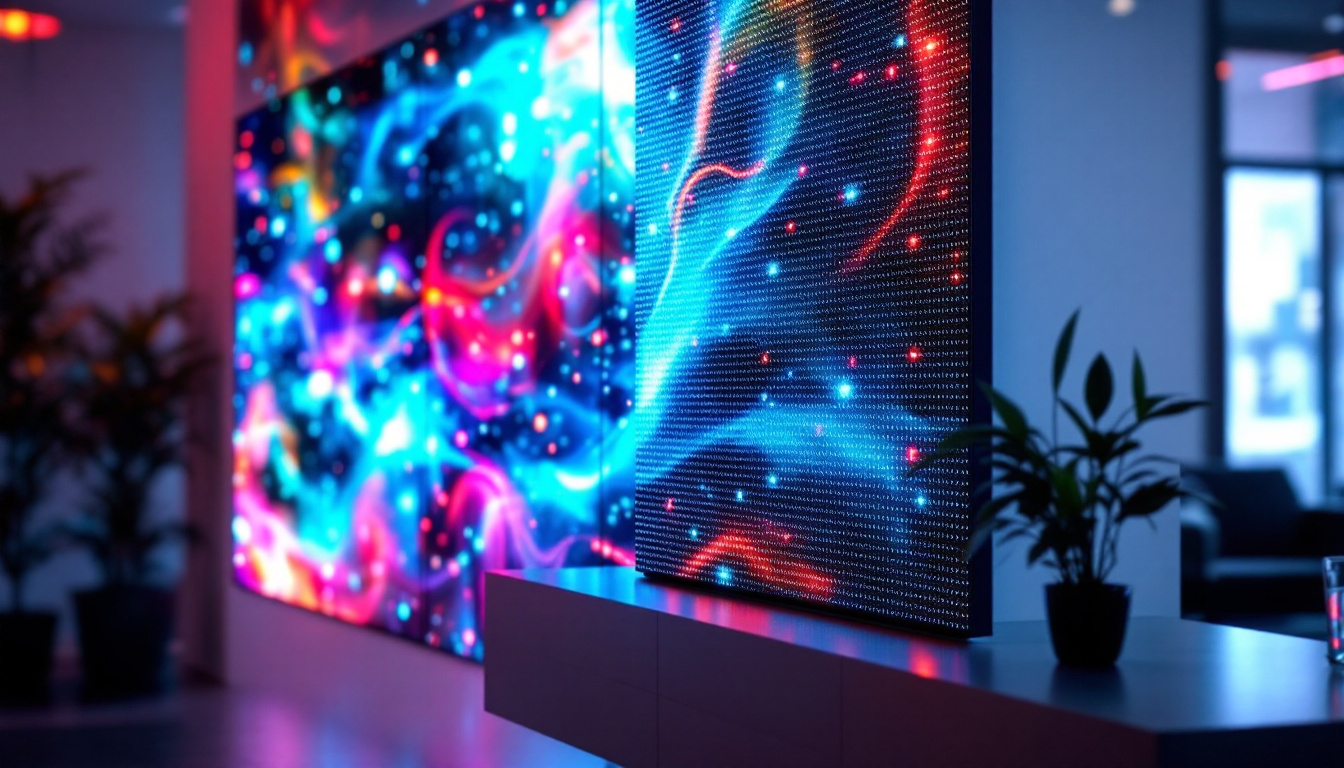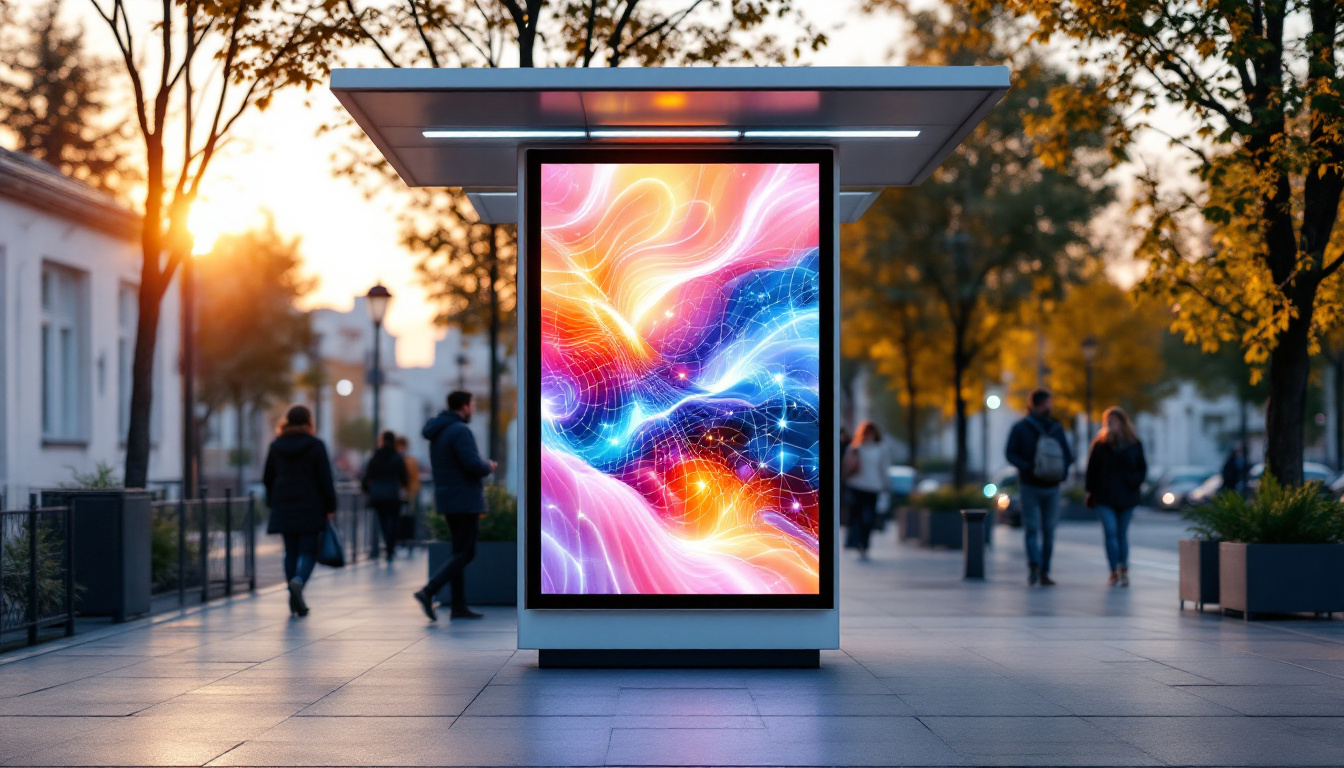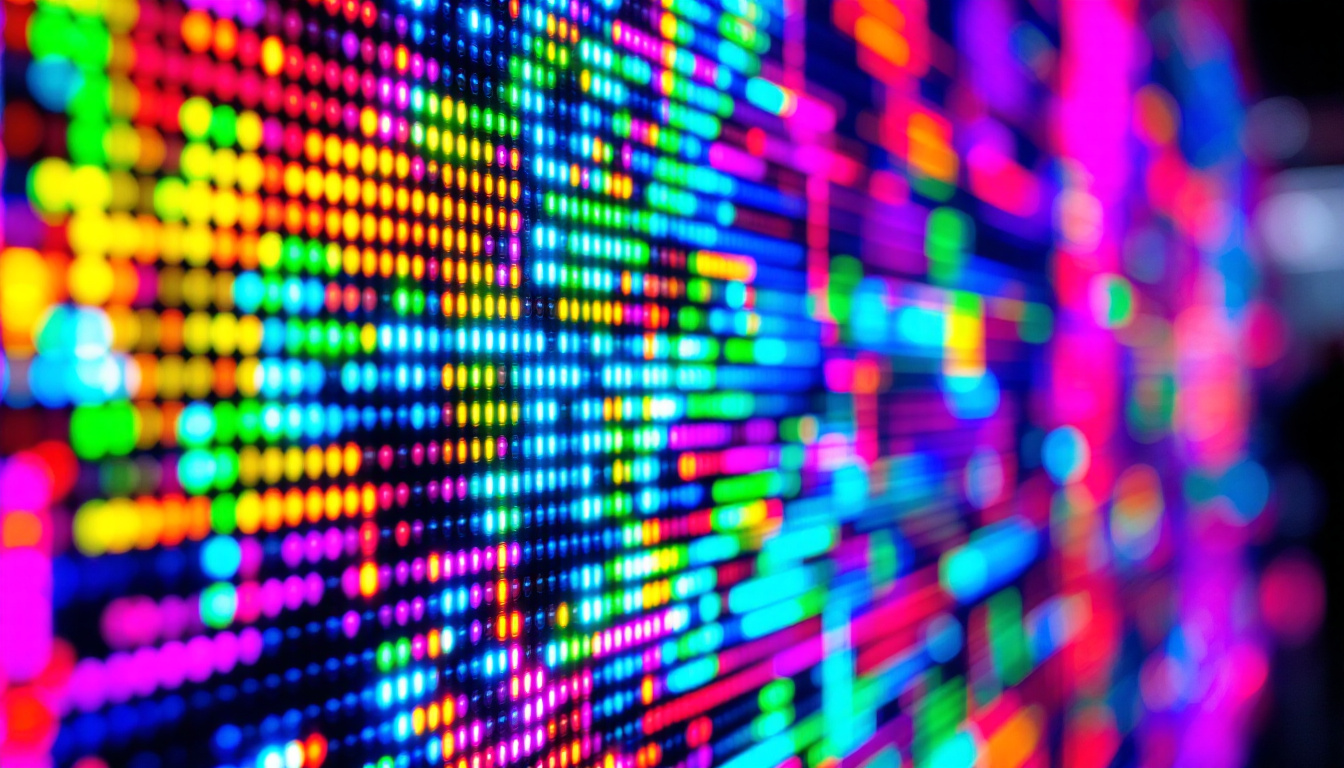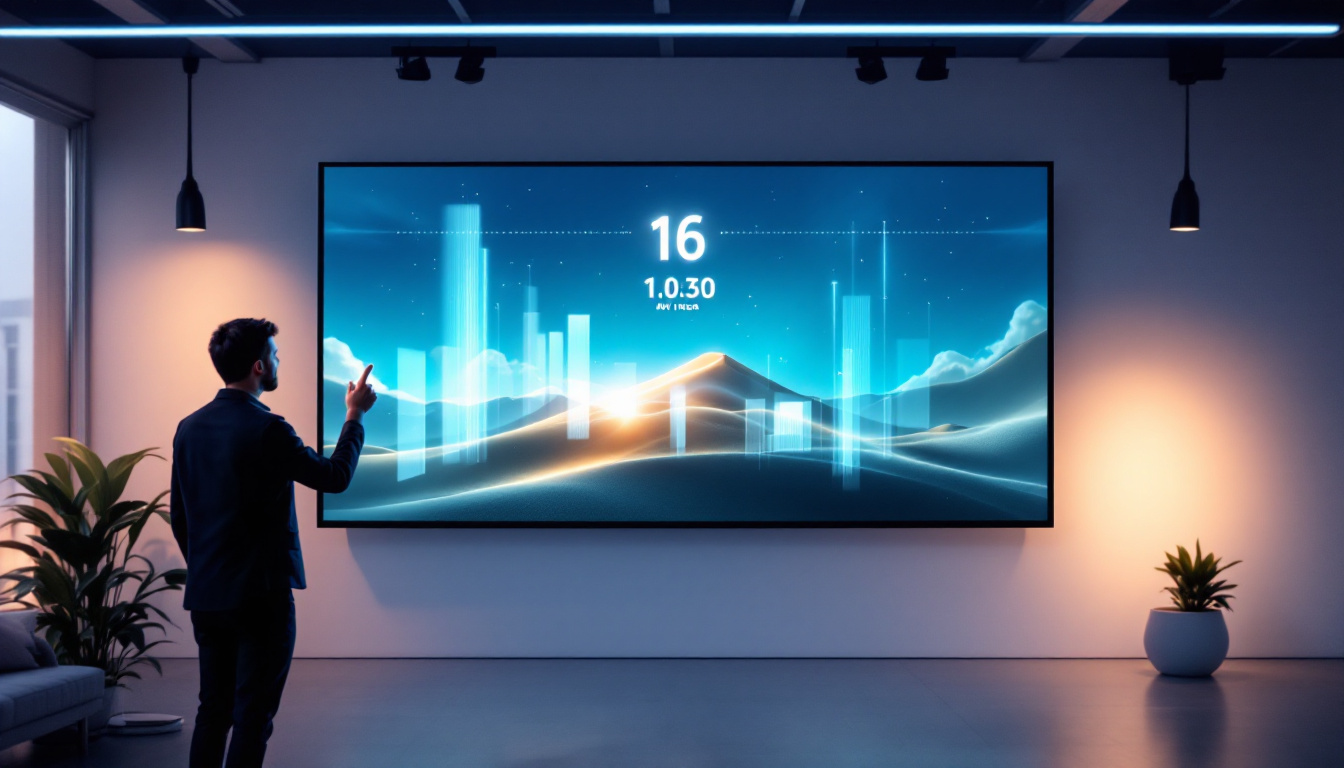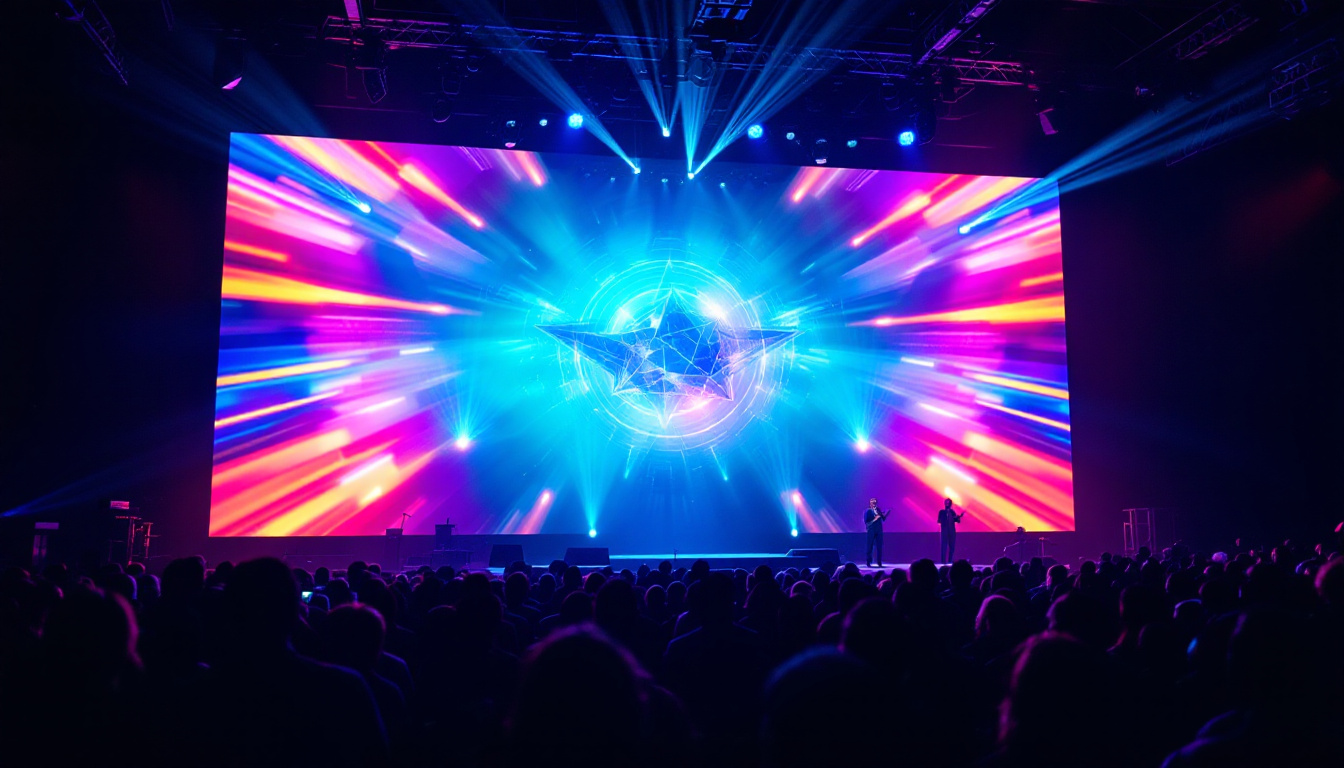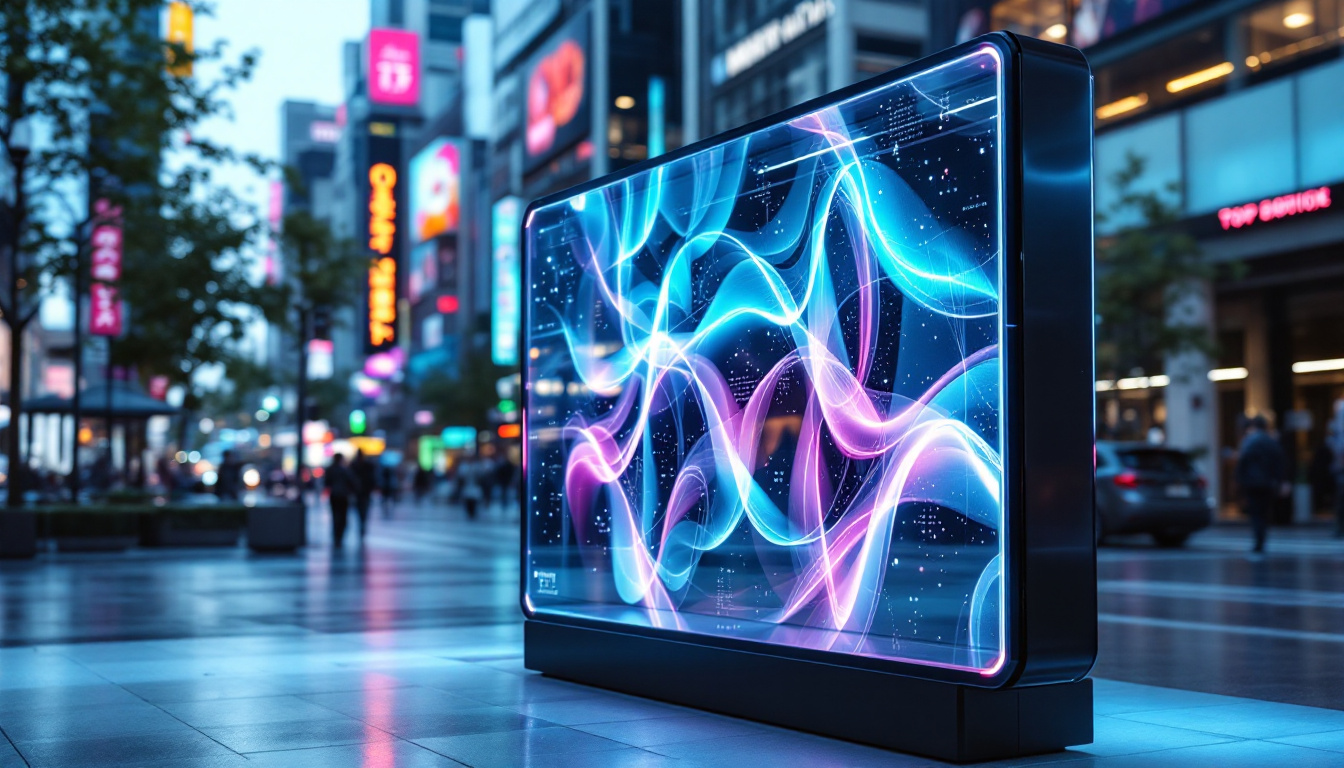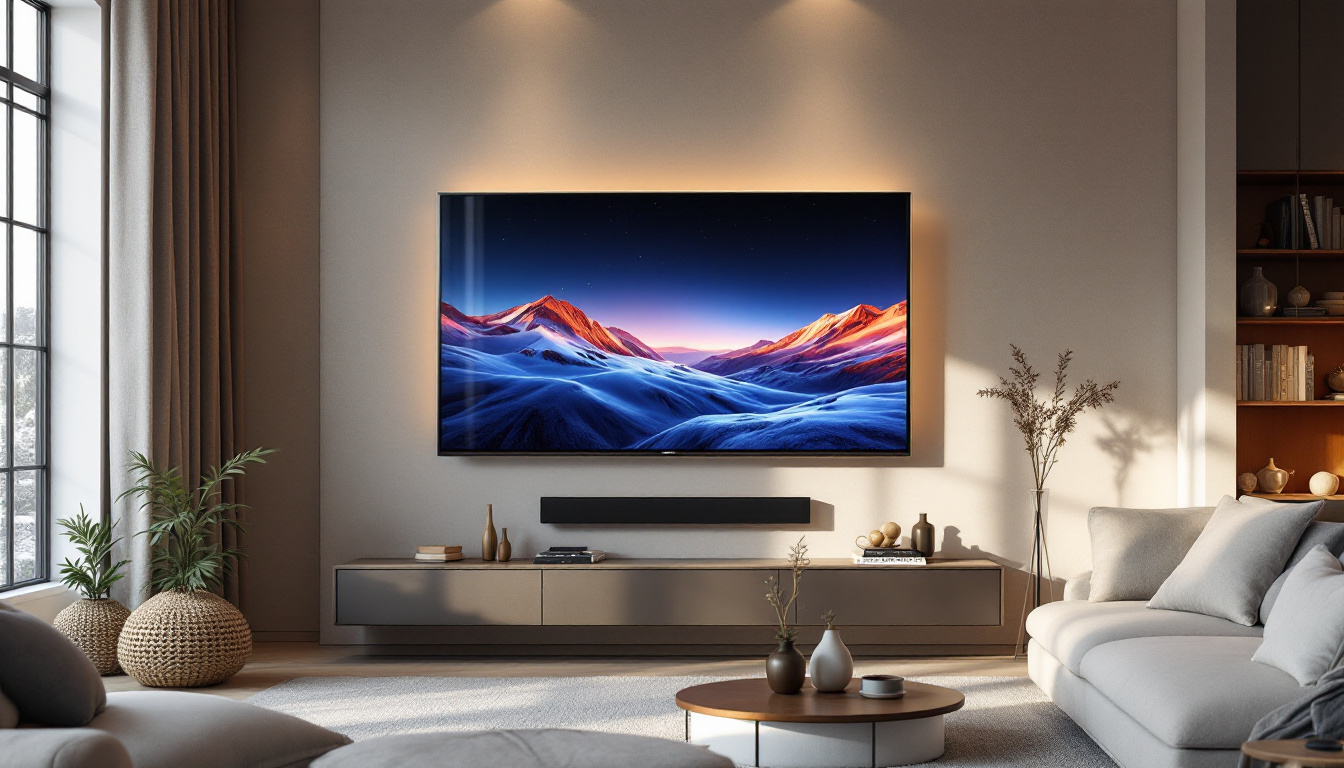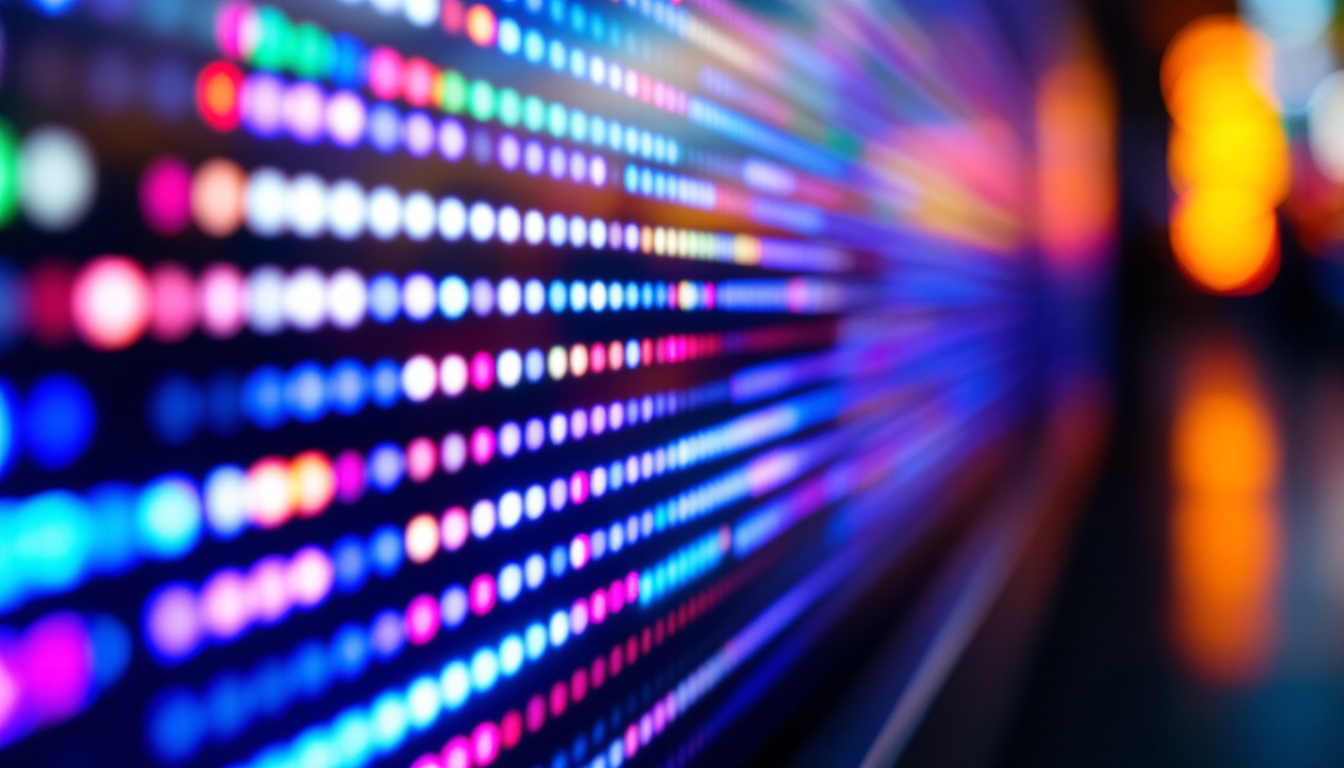Indoor LED Display: LED Display Explained
In today’s digital age, visual communication has become a vital aspect of marketing and information dissemination. One of the most effective tools for achieving this is the indoor LED display. These displays have revolutionized the way businesses and organizations convey messages, engage audiences, and enhance the overall aesthetic of their environments. This article delves into the intricacies of indoor LED displays, exploring their technology, applications, benefits, and future trends.
Understanding LED Technology
LED, or Light Emitting Diode, technology has evolved significantly over the years, making it the preferred choice for various display applications. Unlike traditional display technologies, such as LCD or projection systems, LED displays utilize semiconductor materials to emit light when an electric current passes through them. This fundamental difference contributes to their unique characteristics and advantages. One of the most notable benefits of LED technology is its energy efficiency; LED displays consume significantly less power compared to their counterparts, leading to lower operational costs and a reduced environmental footprint.
How LED Displays Work
At the core of an LED display are numerous tiny diodes that work together to produce images. Each pixel on the display consists of red, green, and blue (RGB) LEDs, which can be combined in varying intensities to create a wide spectrum of colors. The precise control of these diodes allows for high-resolution images and videos that are bright and vibrant. Moreover, LED technology offers a faster response time, which is crucial for displaying fast-moving content without blurring or ghosting, making it ideal for sports events and action-packed films.
Additionally, LED displays can be configured in various sizes and shapes, making them versatile for different applications. They can be flat, curved, or even modular, allowing for creative installations that capture attention and enhance the viewing experience. This adaptability extends beyond aesthetics; it also means that LED displays can be tailored to fit specific environments, whether it’s a small retail space or a large outdoor arena, ensuring optimal visibility and engagement for viewers.
Types of Indoor LED Displays
Indoor LED displays come in several types, each suited for specific applications. The most common types include:
- Direct View LED Displays: These displays are made up of individual LED modules that can be assembled into a larger screen. They are ideal for large venues and events, providing a seamless viewing experience. Their modular nature allows for easy maintenance and upgrades, ensuring that the display remains cutting-edge over time.
- LED Video Walls: Comprising multiple smaller screens, video walls can create a massive display area. They are often used in control rooms, auditoriums, and retail spaces to deliver dynamic content. The ability to show multiple feeds simultaneously makes video walls particularly effective for broadcasting live events or displaying interactive content that engages audiences.
- Flexible LED Displays: These displays can bend and curve, allowing for innovative designs that fit unique spaces. They are particularly popular in creative installations and artistic displays. Their flexibility not only enhances visual appeal but also opens up new possibilities for storytelling and branding, as they can be integrated into architectural features or used to create immersive environments.
Applications of Indoor LED Displays
The versatility of indoor LED displays makes them suitable for a wide range of applications across various industries. From retail to corporate environments, their ability to engage audiences and convey information effectively is unmatched.
Retail and Advertising
In the retail sector, indoor LED displays serve as powerful marketing tools. They can showcase promotions, product launches, and brand messages in an eye-catching manner. Retailers often use these displays to create immersive shopping experiences, drawing customers’ attention to featured products and special offers.
Moreover, the dynamic nature of LED displays allows for real-time updates. For instance, a store can instantly change its advertising content based on inventory levels or seasonal promotions, ensuring that customers always receive relevant information.
Corporate and Event Spaces
Indoor LED displays have found a significant place in corporate environments, particularly in conference rooms and event spaces. They are used for presentations, video conferencing, and live streaming events, providing high-quality visuals that enhance communication.
During corporate events, LED displays can be employed to display schedules, speaker information, and live social media feeds, creating an engaging atmosphere for attendees. Their ability to deliver clear visuals in well-lit environments makes them a preferred choice for such settings.
Entertainment and Hospitality
The entertainment industry has also embraced indoor LED displays, utilizing them in theaters, concert venues, and nightclubs. These displays can create stunning visual effects, enhancing performances and captivating audiences.
In hospitality settings, such as hotels and restaurants, LED displays can be used for wayfinding, menus, and promotional content. Their flexibility allows for creative installations that align with the venue’s theme and ambiance.
Benefits of Indoor LED Displays
Investing in indoor LED displays offers numerous advantages that contribute to their growing popularity. Understanding these benefits can help organizations make informed decisions about their visual communication strategies.
High Visibility and Brightness
One of the standout features of indoor LED displays is their exceptional brightness. Unlike traditional displays, LED technology ensures that content remains visible even in well-lit environments. This high visibility is crucial for capturing attention and conveying messages effectively.
Additionally, LED displays provide excellent contrast ratios, resulting in vibrant colors and sharp images. This quality enhances the overall viewing experience, making it easier for audiences to engage with the content being presented.
Energy Efficiency
Indoor LED displays are known for their energy efficiency compared to other display technologies. They consume less power while delivering superior brightness and image quality. This energy efficiency not only reduces operational costs but also aligns with sustainability goals, making them an eco-friendly choice for organizations.
Longevity and Durability
LED displays boast a long lifespan, often exceeding 100,000 hours of operation. This longevity translates to lower maintenance costs and fewer replacements over time. Furthermore, LED technology is inherently durable, making these displays resistant to shock and vibration, which is particularly advantageous in high-traffic areas.
Considerations When Choosing Indoor LED Displays
While the benefits of indoor LED displays are compelling, several factors should be considered when selecting the right display for a specific application. Understanding these considerations can help ensure that the investment meets the organization’s needs effectively.
Resolution and Pixel Pitch
The resolution of an LED display is determined by its pixel pitch, which refers to the distance between individual pixels. A smaller pixel pitch results in higher resolution and sharper images, making it ideal for close viewing distances. Conversely, a larger pixel pitch may suffice for applications where viewers are farther away.
Organizations should assess their audience’s viewing distance and the type of content they plan to display to determine the appropriate resolution. This consideration is crucial for ensuring that the display delivers the desired visual impact.
Installation and Space Requirements
The installation process for indoor LED displays can vary based on the type and size of the display. Organizations need to evaluate their available space and determine whether they require a fixed installation or a more flexible, modular solution.
Additionally, considerations such as weight, mounting options, and access for maintenance should be factored into the decision-making process. Proper planning can help avoid complications during installation and ensure that the display functions optimally.
Content Management and Integration
Effective content management is essential for maximizing the impact of an indoor LED display. Organizations should consider how they will create, schedule, and update content on the display. Many LED displays come with content management systems that simplify this process, allowing for real-time updates and dynamic content delivery.
Furthermore, integration with existing systems, such as digital signage software or social media feeds, can enhance the display’s functionality. Organizations should evaluate their needs and choose a display that offers seamless integration with their current infrastructure.
Future Trends in Indoor LED Displays
The indoor LED display market is continually evolving, driven by advancements in technology and changing consumer preferences. Staying informed about future trends can help organizations leverage the latest innovations and maintain a competitive edge.
Smart LED Displays
As technology advances, the concept of smart LED displays is gaining traction. These displays incorporate features such as sensors, connectivity, and artificial intelligence, allowing for more interactive and personalized experiences. For instance, smart displays can analyze audience behavior and adjust content accordingly, enhancing engagement.
Moreover, integration with the Internet of Things (IoT) enables displays to communicate with other devices, creating a cohesive digital ecosystem. This trend is expected to shape the future of indoor LED displays, making them more versatile and responsive to user needs.
Sustainability Initiatives
With growing concerns about environmental sustainability, manufacturers are focusing on creating eco-friendly LED displays. This includes using recyclable materials, reducing energy consumption, and implementing sustainable manufacturing practices.
Organizations are increasingly prioritizing sustainability in their purchasing decisions, making it essential for LED display manufacturers to align with these values. The future of indoor LED displays will likely see a stronger emphasis on environmentally responsible solutions.
Enhanced Resolution and Technology
As technology continues to advance, the resolution and capabilities of indoor LED displays are expected to improve significantly. Higher pixel densities will enable even sharper images, making displays suitable for a wider range of applications.
Additionally, innovations such as microLED technology promise to deliver enhanced performance and flexibility. This technology allows for smaller, more efficient displays that can be used in various environments, further expanding the possibilities for indoor LED displays.
Conclusion
Indoor LED displays have emerged as a powerful tool for visual communication, offering unparalleled brightness, versatility, and engagement. Their applications span across various industries, from retail to corporate environments, enhancing the way organizations convey messages and connect with audiences.
As technology continues to evolve, the future of indoor LED displays looks promising, with trends such as smart displays and sustainability initiatives shaping the landscape. By understanding the intricacies of LED technology, organizations can make informed decisions about their visual communication strategies, ensuring they remain at the forefront of innovation.
In a world where attention is fleeting, indoor LED displays provide a compelling solution for capturing and retaining audience interest, making them an invaluable asset for any organization looking to thrive in the digital age.
Discover LumenMatrix LED Display Solutions
Ready to elevate your visual communication strategy with the latest in LED technology? LumenMatrix is at the forefront of innovation, offering a diverse range of LED display solutions tailored to meet your unique needs. From captivating Indoor LED Wall Displays to dynamic Outdoor LED Wall Displays and beyond, our products are designed to enhance brand visibility and create immersive visual experiences. Explore our solutions, including specialized options like Vehicle LED Displays, LED Poster Displays, and Custom LED Displays, and see how we can transform your space. Check out LumenMatrix LED Display Solutions today and start making a lasting impression in the digital age.

